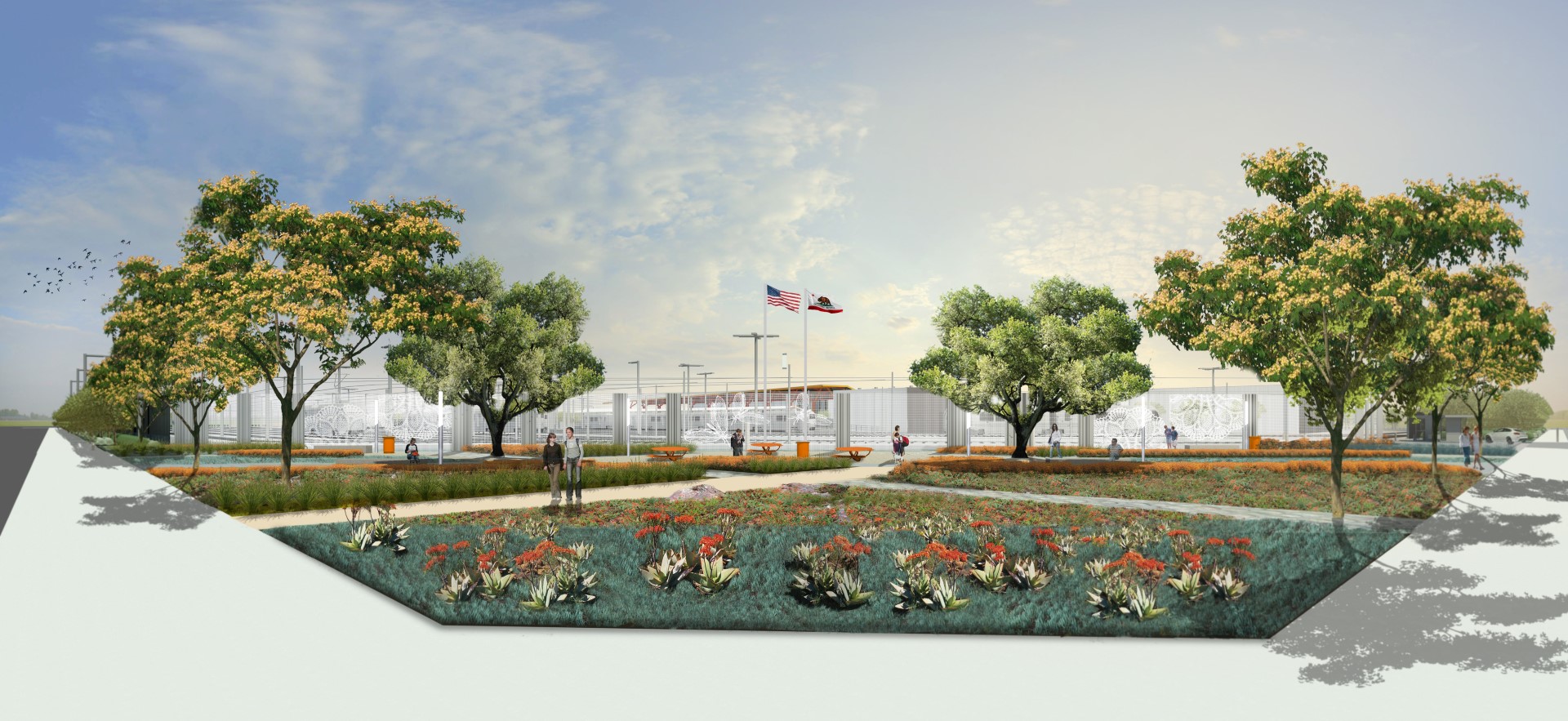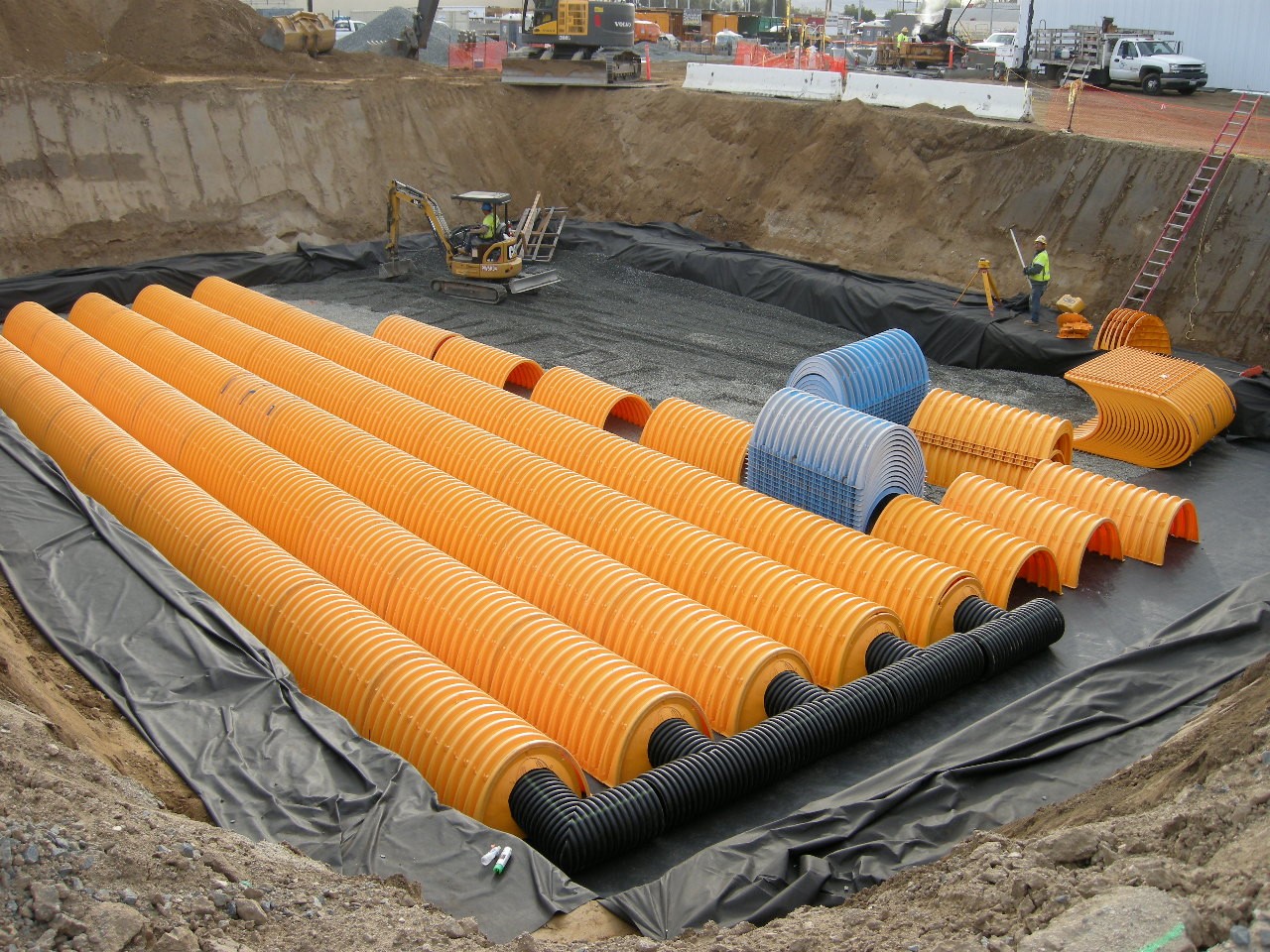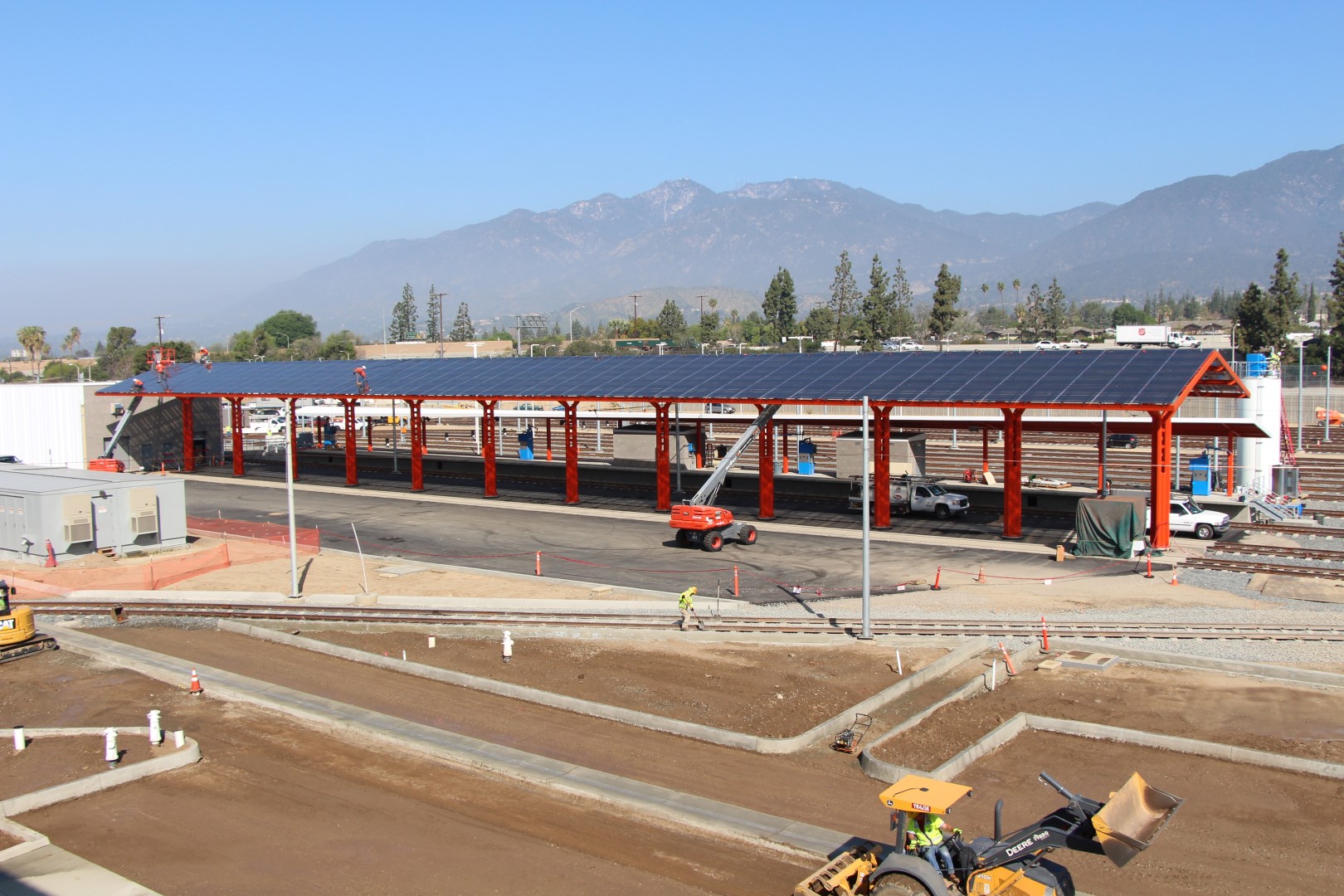
Rendering of Gold Line Operations Campus public plaza and viewing area on corner of Evergreen Ave and California Ave.
The arrival of the Foothill Gold Line light rail project to the San Gabriel Valley doesn’t just mark a convenient alternative to the automobile and freeway congestion, it also represents an environmentally-friendly transportation system that was built with the environment in mind and helps reduce carbon emissions for every new rider. To celebrate Earth Day 2015, here are 10 earth-friendly facts about the Foothill Gold Line:
- When service begins, the Foothill Gold Line from Pasadena to Azusa will add tens of thousands of new riders daily to the Metro Gold Line light rail system, many of whom will be doing so in place of driving.
- Nearly 1.2-million boardings took place on the Gold Line in March. That’s a lot of car trips that were not taken, resulting in fewer carbon emissions.
- On average, a light rail system like the Foothill Gold Line produces 62% fewer carbon emissions per passenger mile than automobiles. (source: FTA)
- To reduce carbon emissions from material transportation trucks during construction, all of the ballast rocks used for the Foothill Gold Line from Pasadena to Azusa were locally sourced.
- All 56 miles of steel rail used for the construction of the Pasadena to Azusa segment were made from recycled steel.
- The 132,000 sq ft Main Shop Building at the Gold Line Operations Campus is one of the only of its kind to be designed and built to LEED Gold certification levels, one of the highest standards of sustainable development in the industry.
- The Main Shop Building is designed to reduce water usage by 35% and electricity by 32.5% in comparison to similar buildings.
- During a drought year, up to 46% or more of California’s water supply comes from groundwater. The Gold Line Operations Campus features a comprehensive stormwater system that’s designed to capture the first ¾-inch (or 112,000 gallons) of rainfall, filter it, then transport through to underground chambers where the water infiltrates and replenishes the groundwater.
- Your standard car wash at a rail maintenance facility uses an average of 60,000 gallons of water each day. To reduce water waste, the car wash at the Gold Line Operations Campus will only use recycled, reclaimed water.
- The Gold Line Operations Campus features its own renewable energy in the form of an on-site 714-panel solar power array. It will generate an average of 22,000 kilowatt-hours per month, enough to fully power more than 24 average-sized homes.
- If the electricity generated by the solar power array is not immediately utilized on-site, the power will be made available to the local electric grid.
- During construction of the Operations Campus, the majority of the disposed construction materials are diverted away from landfills to be repurposed and recycled.
As a reminder, the next open house for the Foothill Gold Line from Azusa to Montclair will take place at the Glendora Public Library this Thursday, April 23, 2015 from 6 to 8 PM. Glendora station artist Michael Hillman will be there to showcase his art concept for the future station. We look forward to seeing you there. For information on the open house meetings, click here.



